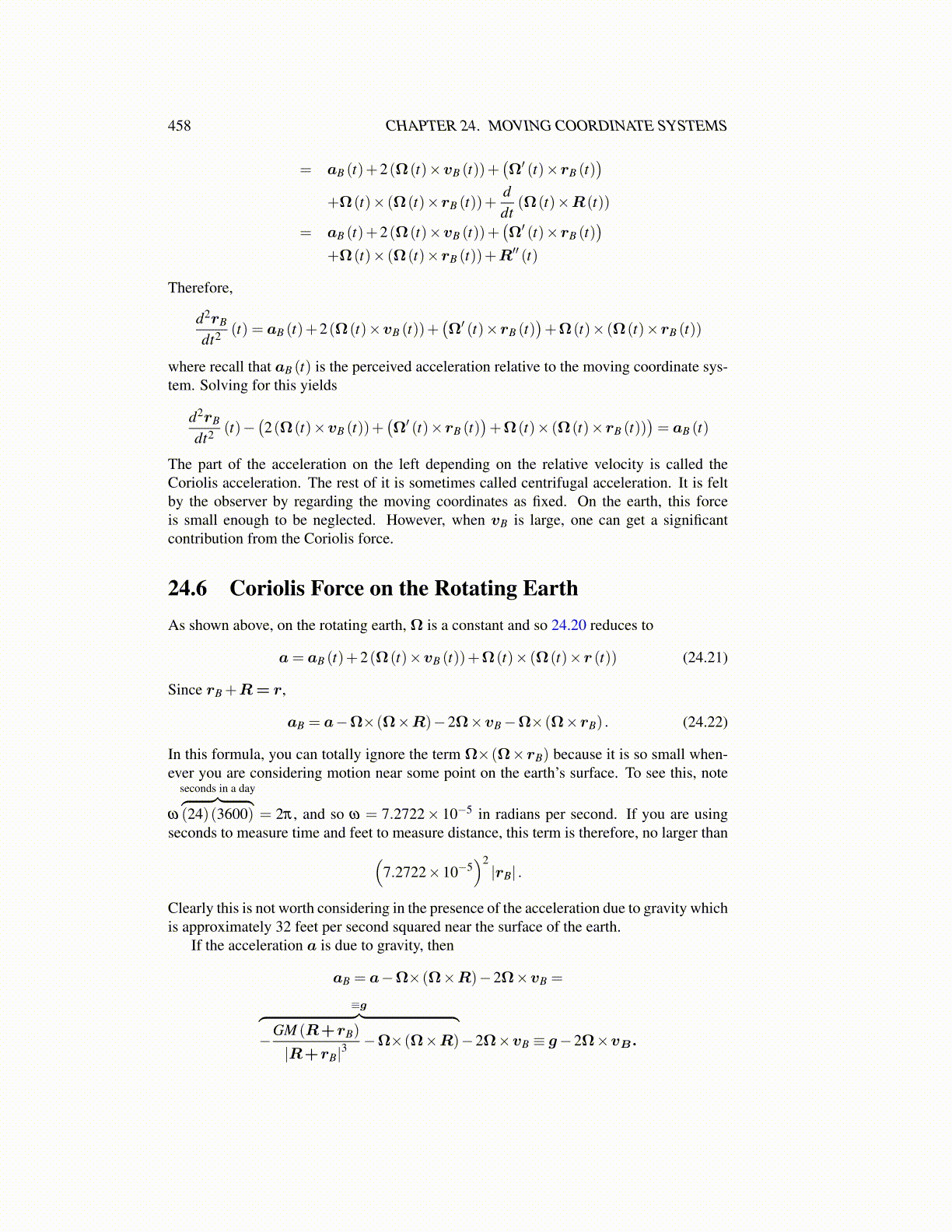
458 CHAPTER 24. MOVING COORDINATE SYSTEMS
= aB (t)+2(Ω(t)×vB (t))+(Ω′ (t)×rB (t)
)+Ω(t)× (Ω(t)×rB (t))+
ddt
(Ω(t)×R(t))
= aB (t)+2(Ω(t)×vB (t))+(Ω′ (t)×rB (t)
)+Ω(t)× (Ω(t)×rB (t))+R′′ (t)
Therefore,
d2rB
dt2 (t) = aB (t)+2(Ω(t)×vB (t))+(Ω′ (t)×rB (t)
)+Ω(t)× (Ω(t)×rB (t))
where recall that aB (t) is the perceived acceleration relative to the moving coordinate sys-tem. Solving for this yields
d2rB
dt2 (t)−(2(Ω(t)×vB (t))+
(Ω′ (t)×rB (t)
)+Ω(t)× (Ω(t)×rB (t))
)= aB (t)
The part of the acceleration on the left depending on the relative velocity is called theCoriolis acceleration. The rest of it is sometimes called centrifugal acceleration. It is feltby the observer by regarding the moving coordinates as fixed. On the earth, this forceis small enough to be neglected. However, when vB is large, one can get a significantcontribution from the Coriolis force.
24.6 Coriolis Force on the Rotating EarthAs shown above, on the rotating earth, Ω is a constant and so 24.20 reduces to
a= aB (t)+2(Ω(t)×vB (t))+Ω(t)× (Ω(t)×r (t)) (24.21)
Since rB +R= r,
aB = a−Ω×(Ω×R)−2Ω×vB−Ω×(Ω×rB) . (24.22)
In this formula, you can totally ignore the term Ω×(Ω×rB) because it is so small when-ever you are considering motion near some point on the earth’s surface. To see this, note
ω
seconds in a day︷ ︸︸ ︷(24)(3600) = 2π , and so ω = 7.2722× 10−5 in radians per second. If you are using
seconds to measure time and feet to measure distance, this term is therefore, no larger than(7.2722×10−5
)2|rB| .
Clearly this is not worth considering in the presence of the acceleration due to gravity whichis approximately 32 feet per second squared near the surface of the earth.
If the acceleration a is due to gravity, then
aB = a−Ω×(Ω×R)−2Ω×vB =
≡g︷ ︸︸ ︷−GM (R+rB)
|R+rB|3−Ω×(Ω×R)−2Ω×vB ≡ g−2Ω×vB.